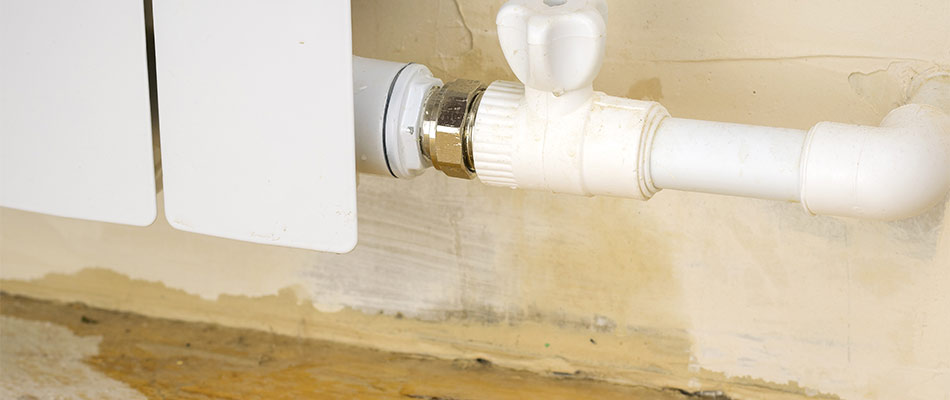6 Ways to Locate Concealed Water Leaks in Your Home
6 Ways to Locate Concealed Water Leaks in Your Home
Blog Article
This post listed below relating to Locating water leaks is quite interesting. Don't miss out on it.

Early discovery of dripping water lines can minimize a possible calamity. Besides saving you cash, it will certainly decrease the stress as well as aggravation. The minute you find a leak, calling your plumber for fixings is the most effective solution. Nonetheless, some little water leakages might not be visible. If you can not discover it with your naked eyes, right here are some hacks that aid.
1. Check Out the Water Meter
Every home has a water meter. Inspecting it is a proven way that aids you uncover leaks. For beginners, shut off all the water sources. Make sure nobody will certainly purge, use the faucet, shower, run the washing maker or dishwasher. From there, go to the meter and also watch if it will certainly change. Given that no one is using it, there need to be no motions. That indicates a fast-moving leak if it moves. If you spot no changes, wait an hour or 2 and also check back once more. This implies you may have a slow-moving leakage that could even be below ground.
2. Check Water Usage
Examine your water bills and also track your water usage. As the one paying it, you should observe if there are any disparities. If you detect sudden changes, despite your intake coinciding, it suggests that you have leakages in your plumbing system. Remember, your water bill need to drop under the same array every month. An abrupt spike in your costs suggests a fast-moving leakage.
On the other hand, a consistent rise monthly, even with the very same habits, shows you have a sluggish leak that's also gradually escalating. Call a plumber to completely examine your home, especially if you really feel a warm area on your floor with piping underneath.
3. Do a Food Coloring Test
When it comes to water intake, 30% comes from commodes. Test to see if they are running appropriately. Drop flecks of food shade in the container and also wait 10 minutes. There's a leakage between the tank as well as bowl if the shade in some way infiltrates your bowl throughout that time without flushing.
4. Asses Outside Lines
Do not forget to examine your exterior water lines also. Must water leak out of the link, you have a loose rubber gasket. One tiny leak can lose heaps of water as well as surge your water costs.
5. Inspect as well as Examine the Situation
Homeowners should make it a routine to check under the sink counters and also also inside cabinets for any bad odor or mold development. These 2 red flags show a leak so timely interest is required. Doing regular assessments, also bi-annually, can save you from a major issue.
Check for discolorations as well as weakening as most pipelines and devices have a life expectancy. If you think leaking water lines in your plumbing system, do not wait for it to escalate.
Early discovery of leaking water lines can minimize a potential disaster. Some tiny water leakages may not be visible. Inspecting it is a surefire method that assists you uncover leaks. One tiny leakage can waste bunches of water and also surge your water expense.
If you presume leaking water lines in your plumbing system, do not wait for it to rise.
Tips for Detecting Hidden Plumbing Leaks
Check for Signs of Water Damage
We recommend that you check the following places for evidence of water damage:
Near where you store your water heater
Around your sump pump
In areas where pipes are visible
Underneath cabinetry or a vanity beneath a sink
Where your outside hose bib isIf water damage is present, you may also notice mold and/or mildew or smell a foul or musky odor. You might also be able to hear the sound of water running where it shouldn’t be.
Perform a Water Meter Test
One of the easiest ways to determine whether you have a hidden leak on your property is to test your water meter. Turn off all appliances in that use water and make sure you don’t have any faucets running. Locate your water meter and record the reading on it. Continue to leave everything off for a minimum of two hours and then go back and see the meter reading. If it’s a noticeable difference, chances are you have a hidden plumbing leak.
Monitor Your Outside Usage
As the seasons change, you might use more water to keep your yard lush and green and your flowers blooming. However, it’s important to routinely ensure that your sprinkler or irrigation system is working properly and that any outside faucets are completely off. This way you’re not wasting any water.
Do the Toilet Food Coloring Test
Are you kept up at night because your toilet continues to run? If you’ve noticed your toilet randomly refills, especially when it’s not in use, it could mean you have a defective flapper tank and water will leak into the bowl. Fortunately, there’s an easy (and kind of fun!) way to test whether you’re dealing with this issue. Grab some food coloring and add a few drops into your toilet’s tank. Wait 15 minutes and then check to see whether the water in the bowl is colored. If it is, you have a leak within your toilet and the internal assembly will need to be repaired or replaced.
https://www.carterservices.com/blog/2020/february/tips-for-detecting-hidden-plumbing-leaks/

As a devoted reader about Hacks to detect leaks, I thought sharing that excerpt was worthwhile. Liked our write-up? Please share it. Let other people find it. I recognize the value of reading our article about Hacks to detect leaks.
Report this page